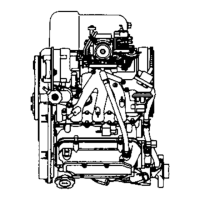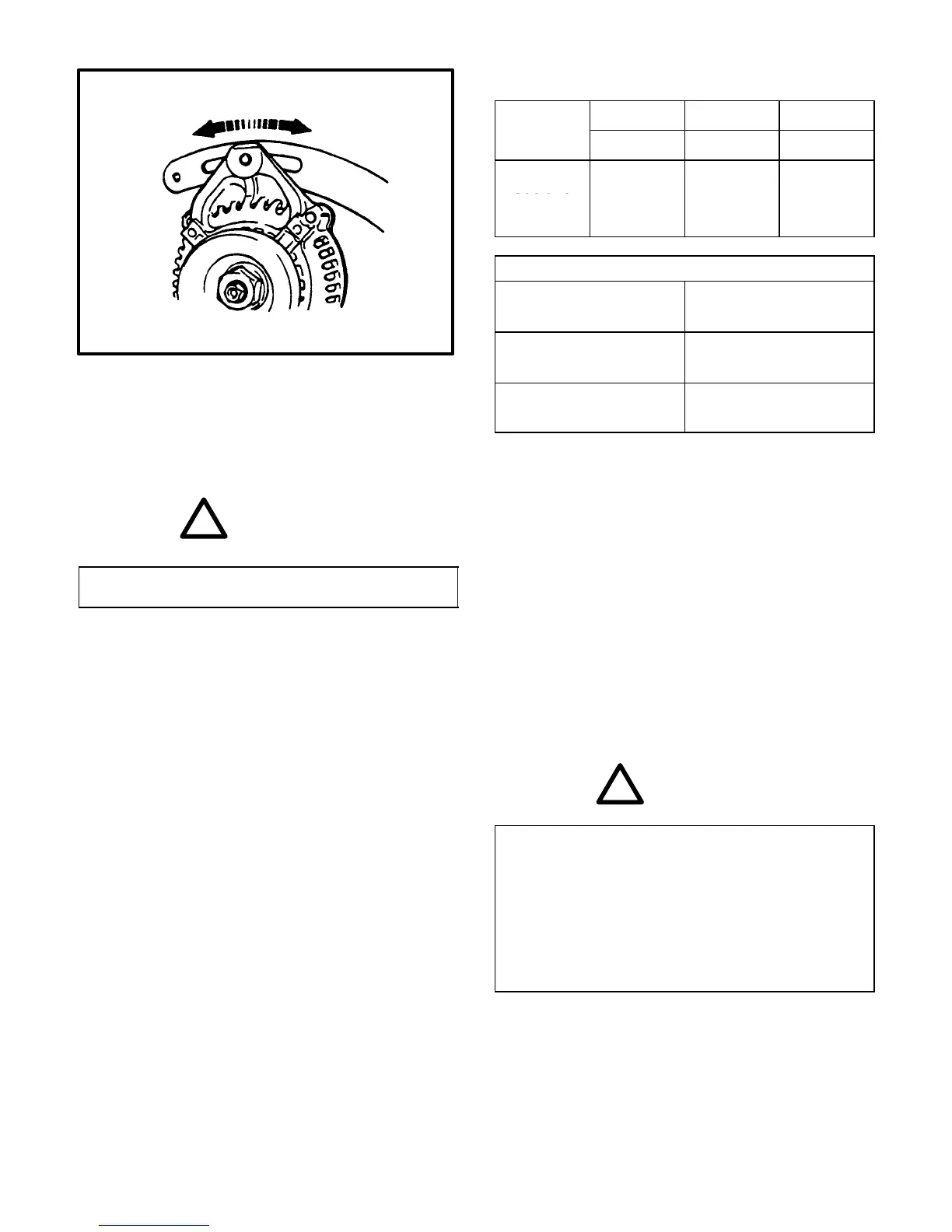142
3) Tighten alternator adjusting bolt and pivot bolts.
4) If it is necessary to replace belt, refer to SECTION 10
for procedure.
WARNING
!
All adjustments described above are to be per-
formed with ENGINE NOT RUNNING.
Coolant
The coolant recovery system is standard. The coolant
in the radiator expands with heat, and the overflow is col-
lected in the reservoir tank.
When the system cools down, the coolant is drawn back
into the radiator.
The cooling system has been filled at the factory with a
quality coolant that is a 50/50 mixture of water and \ethyl-
ene glycol antifreeze.
This 50/50 mixture coolant solution provides freezing
protection to –36°C (–33°F)
Maintain cooling system freeze protection
at –36°C (–33°F) to ensure protection
against corrosion and loss of coolant from
boiling. This should be done even if freez-
ing temperatures are not expected.
Add ethylene glycol base coolant when
coolant has to be added because of cool-
ant loss or to proved added protection
against freezing at temperatures lower
than –36°C (–33°F).
ANTI–FREEZE PROPORTIONING CHART
Freezing
°C –16 –36
empera-
ture
°F 3 –33
Antifreeze/
coolant
concentra-
tion
COOLANT CAPACITY
Engine, radiator and
heater
4.2 liters
(8.9/7.4 US/Imp pt.)
Reservoir tank
0.5 liters
(1.1/0.9 US/Imp pt.)
Total
4.7 liters
(10.0/8.3 US/Imp pt.)
NOTE:
Alcohol or methanol base coolants or plain
water alone should not be used in cooling
system at any time, as damage to to cool-
ing system could occur.
Even in an area where no freezing temper-
atures is anticipated, mixture of 70% water
and 30% ethylene glycol antifreeze (Anti–
freeze/Anticorrosion coolant) should be
used for the purpose of corrosion protec-
tion and lubrication.
Coolant Level
To check level, remove seat and look at “see through”
water reservoir tank.
WARNING
!
To help avoid danger of being burned:
do not remove reservoir tank cap while
coolant is “boiling”.
do not remove radiator cap while engine
and radiator are still hot.
Scalding fluid and steam can be blown out under
pressure if either cap is taken off too soon.
When engine is cool, check coolant level in reservoir
tank. Abnormal coolant level should be between “FULL”
and “LOW” marks on reservoir tank.
If coolant level is below “low mark, remove reservoir tank
cap and add proper coolant to tank to bring coolant level
up to “FULL” mark. Then, reinstall cap.

